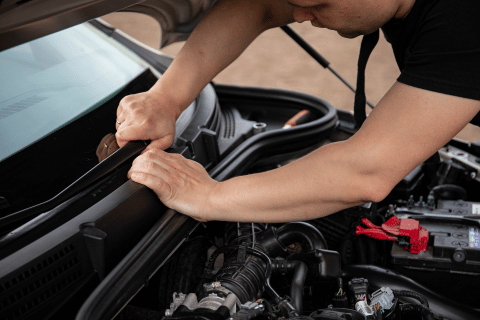To obtain a vehicle title after satisfying a loan or after a charge-off, consumers need to secure a lien release from the lender. When you finance a vehicle, the lender, often a bank, holds the title as the lien holder. Once the loan is paid off, the lender would normally sign, stamp the title as paid, and mail it to you. However, issues can arise where the title is lost, never sent, or lost in the mail. Even if the loan is paid off, the lien record might remain in the DMV database.
Here is the approach we typically use to secure the lien release letter:
General Approach and Why It’s Crucial to Do it Your Way
Lenders and financial institutions typically do not have a dedicated department for lien releases. Staff members who handle lien releases also manage other duties like loan payments, new loans, or title work. Because of this, they are often reluctant to drop their primary tasks to process a lien release, which can involve pulling forms, looking up records, filling out documents, and signing them.
- Avoid Phone, Email, or Text: Unless you are the original borrower who paid off the loan, attempting to get a lien release by phone, email, text message, Facebook, or LinkedIn is highly ineffective, often resulting in a 0% chance of success. Lenders may say they will send it but never do, or they might outright refuse or give you the “runaround”.
- Always Do It In Writing: The most effective way to get a lien release is to do it in writing, specifically via postal mail. This creates a record of your request which can be used if you decide to pursue a court ordered title.
Steps for Obtaining a Lien Release
Regardless of the scenario (paid off or charge-off), all the necessary forms need to be prepared and mailed to the lien holder. This will provide the best chance to obtain the release.
- Prepare the Document Package:
- You need to prepare a package of documents for the lien holder. This process can take an hour to two hours.
- Essential documents to include are:
- A Release of Lien form.
- A Letter of Non-Interest.
- An Affidavit of Facts (also referred to as Declaration of Facts).
- These forms are usually available from your local DMV.
- Include a self-addressed, stamped return envelope in the package. Many companies no longer keep stamps readily available, and providing one removes a potential barrier for the lender to mail the document back to you.
- Mail the Package to the Lien Holder:
- Send the prepared package of documents to the lien holder via postal mail.
- If your loan is paid off, contact the lender directly. Doing it yourself is generally cheaper and faster.
- For loans that are not paid off, such as a charge-off, write-off, or delinquent loan, you still follow the same procedure by sending the written package to the lender. Often, upon receiving your forms, the lender will check their system, confirm it’s a charge-off, and send you the lien release or letter of non-interest. From our clients feedback, there is about a 82% chance of getting a lien release even if money is owed, and almost always if the loan is paid off, provided the formal written request is made.
- Obtain Your Title from the DMV:
- Once you receive the signed lien release (or letter of non-interest) from the lender, you then take this document to the DMV, and they will issue you the title. You might also need to send additional documents to the DMV.
Handling “Zombie Liens” or Unresponsive/Out-of-Business Lenders
A “zombie lien” occurs when an old vehicle lien, which you believed was paid off or otherwise resolved, reappears and blocks your ability to get a title, sell your car, or title the vehicle in another state. This can happen if the lender sold the debt to a collection agency or charged it off.
- Contact the Original Lien Holder First: The first step is to send the lien release package to the original lien holder (e.g., Chase Bank, if they were the original lender), even if you think they are out of business or a collection agency is involved.
- Collection agencies or debt collectors cannot sign a lien release with the DMV; only the original lender can.
- You can find the last known address of the lender in Secretary of State’s, corporate, or banking records.
- Even if the package bounces back, it demonstrates your attempt to contact them.
- Backup Method: Magistrate Title (Court Order Title): If the original lender doesn’t respond or is out of business after you’ve made the formal written request, you have a backup method: filing for a Magistrate Title. To use this option, you would:
- File with your County Magistrate, explaining that you attempted to contact the lender, but they did not respond or claim the vehicle.
- The magistrate or court clerk can then sign the lien release, which effectively clears the lien from your title. This is a crucial method if the loan was in default, charged off, or written off and the lender doesn’t reply.
Obtaining your lien release is important to resolve these issues and secure your vehicle title. You can use a title service to help with the paperwork, but doing it yourself is often cheaper and faster. Give us a call if you would like help with this process.

